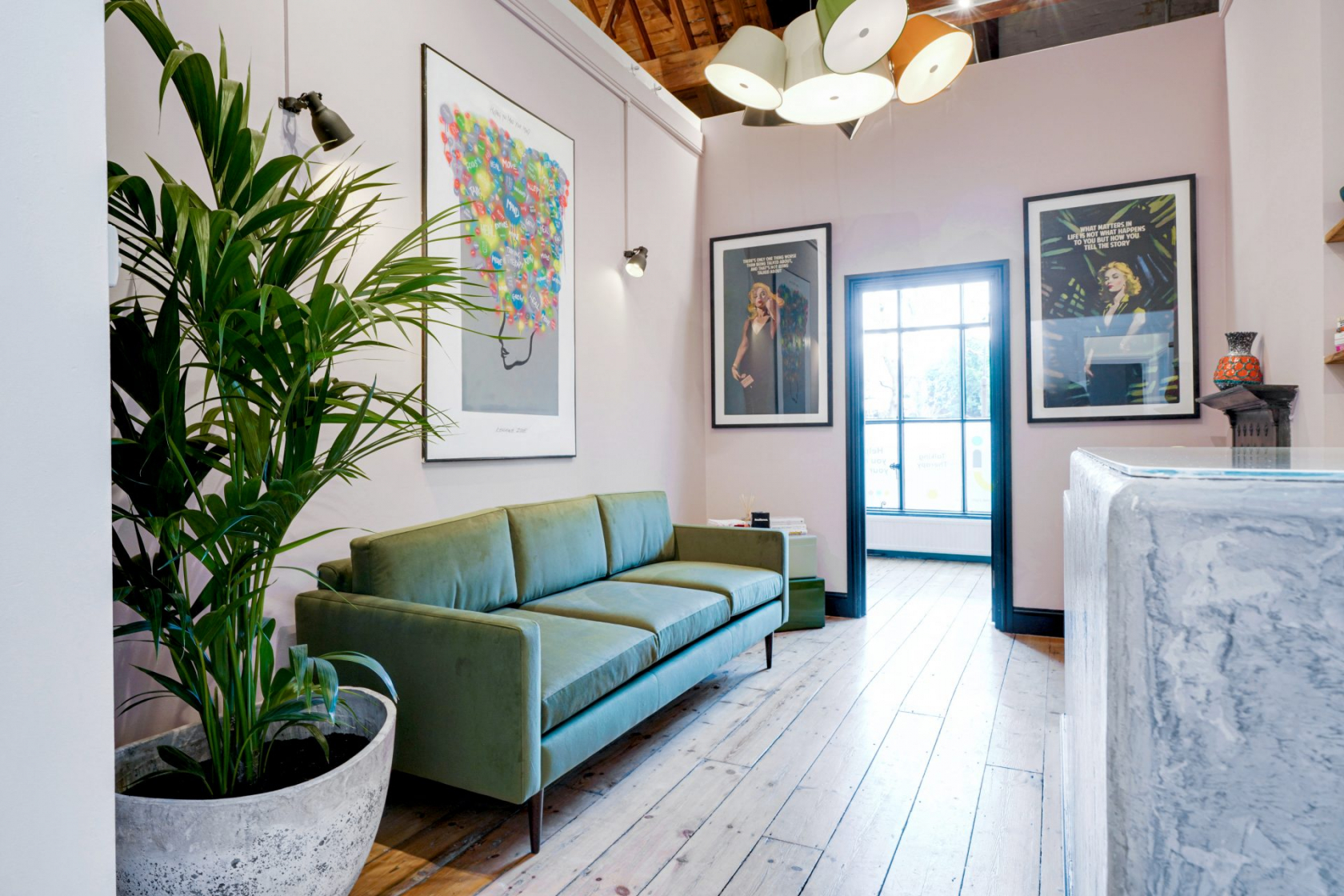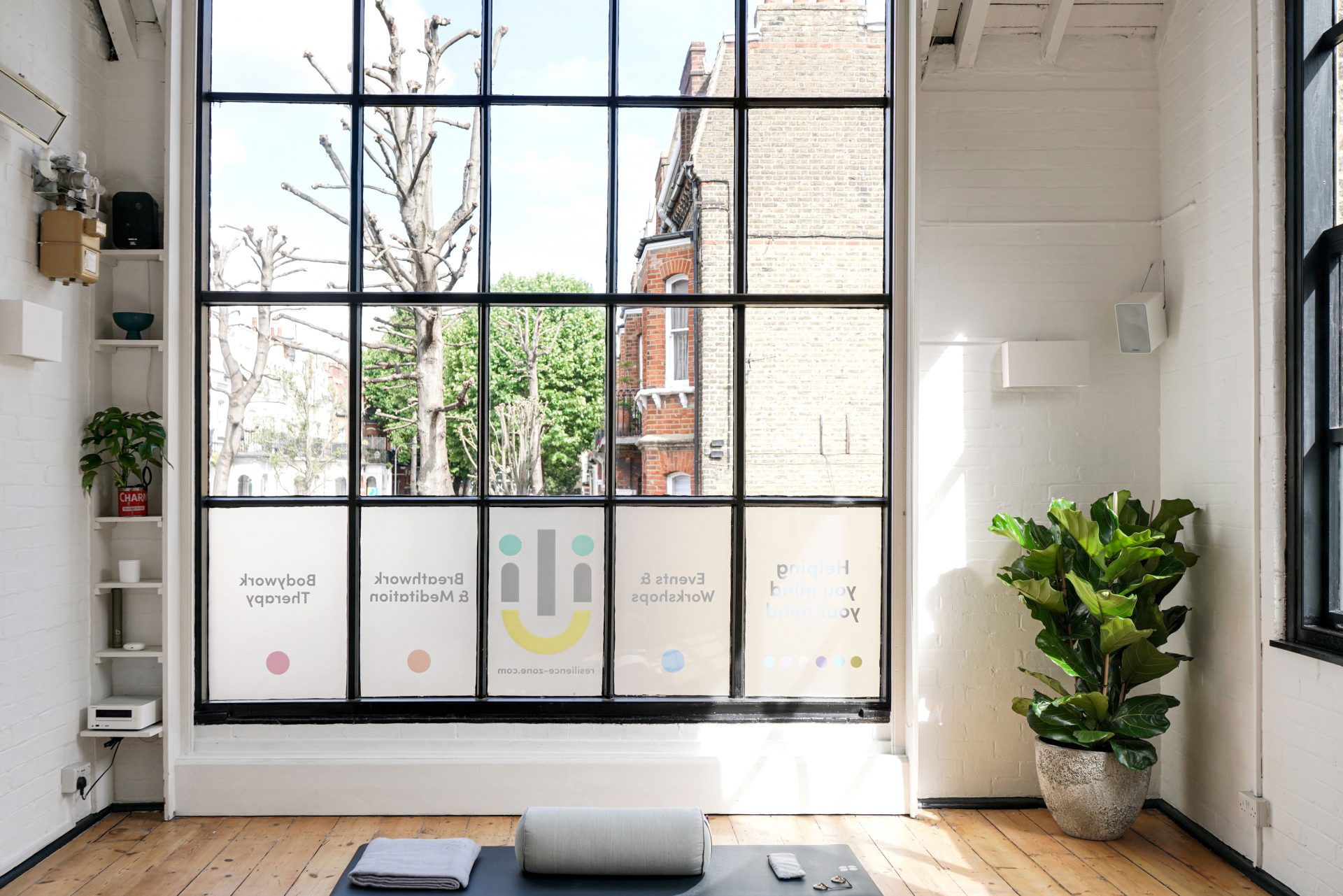Written by Lauren Geall
As Stylist’s digital writer, Lauren Geall writes on topics including mental health, wellbeing and women’s issues. She’s also a big fan of houseplants and likes to dabble in film and TV from time-to-time. You can find her on Twitter at @laurenjanegeall.
Should we work out our minds like we do our bodies? Stylist’s Lauren Geall took a trip to London’s first ‘mind gym’ to find out more.
A key part of my job as a journalist is trying out new things. From viral foundations to mindfulness meditation apps, it’s my responsibility to work out which products and trends are worth investing time and money in, and sharing that knowledge with you – the Stylist reader.
So, when I got an email inviting me to visit Resilience Zone, London’s first-ever ‘mind gym’, it’s safe to say I jumped at the opportunity.
As someone who writes a lot about mental health and wellbeing, I not only wanted to see what on earth a mind gym actually is (honestly, I was perplexed) but also whether the classes and therapies on offer would make a noticeable difference to how I felt when I went in.
Located a five-minute walk away from Parsons Green station in Fulham, west London, Resilience Zone is fairly unassuming from the outside – in fact, I almost missed it. However, once I made my way upstairs and into the gym itself, it didn’t take long for things to get underway.
What exactly is a mind gym?

While many of the treatments and classes on offer at Resilience Zone will have a positive impact on mental health conditions such as anxiety, they’re not designed to be treatments. Instead, Resilience Zone’s main focus is on helping its clients to develop ‘mental wellness’.
In this way, Resilience Zone functions like a gym for the mind in the sense that it helps people to improve their mental fitness and strength, similar to the way a physical gym is somewhere people visit to improve their cardiovascular fitness and muscle strength.
Indeed, while you might visit Resilience Zone because you’re struggling with a specific problem or issue, the services on offer are designed to help you leave feeling stronger and more resilient.
Claire Finlay, Resilience Zone’s founder, explains: “360-degree wellness has been on my mind for a good few years now but it became a stark reality after the pandemic.”
“I really felt there was a gap in the market for a highly accessible, vibrant, welcoming space where people can optimise their mental and emotional health,” Finlay says. “It’s widely accepted that we all invest time and effort into looking after our bodies; I believe the same care and attention should be given to our mental wellness.”
While I went along to try two disciplines – bodywork and breathwork – Resilience Zone offers a wide variety of services, ranging from group pilates classes to therapy and life coaching. You can check out the full range of services on the website.
Trying out bodywork therapy
A large part of Resilience Zone’s offering is group sessions in disciplines such as mindfulness and yoga, but when I went along, I was offered the chance to try two one-to-one sessions.
My first session was respiratory massage, a form of physical treatment called bodywork therapy. According to the Resilience Zone website, bodywork therapy is simply an all-encompassing term for all the different types of massage therapy – but the bodywork on offer at Resilience Zone tends to focus on the relationship between the body and the mind, and how the former affects the latter.
In my session, my practitioner, Anastasia, focused solely on my respiratory system, using a variety of massage techniques to open up my diaphragm and make it easier for me to take deep breaths. As she did this, she encouraged me to focus on my breathing – taking deep breaths through my belly and using specific breathing techniques to help her complete the massage.
One of the main differences between this and other forms of massage therapy I’ve experienced in the past was the emphasis placed on communication – throughout the practice, I was encouraged to share what did and didn’t feel comfortable, and Anastasia talked me through the different areas of my rib cage and diaphragm and noted when something felt tense or relaxed.
While I can’t say I noticed a huge difference to my breathing after the session, it was definitely a relaxing experience, and it helped me to become more aware of how my body moves and feels when I’m breathing properly. It also primed me for my next treatment – a one-to-one coached breathwork session – which was a lot more intense than I ever could have expected.
Exploring breathwork

Like a lot of people with anxiety, I’ve tried breathwork a handful of times – mostly in the form of guided YouTube videos centred around low-intensity techniques like box breathing. As such, I thought I knew what I was getting into when I agreed to a one-to-one breathwork session at Resilience Zone.
Reader, I did not. What I thought would be a simple ‘sit on the floor and breathe in and out through your nose’ kind of job was nothing of the sort. Instead, I found myself lying on the floor with an eye pillow blocking out the world around me as my practitioner – the lovely Tate – talked me through a routine based on the ‘conscious connected breathing’ technique.
While you might associate breathwork with feelings of calm and relaxation, conscious connected breathing is slightly different. In fact, it’s designed to get energy moving around your body using the nervous system’s parasympathetic response – aka, the fight or flight feeling many of us get when we’re feeling anxious, worried or stressed.
This feeling is achieved via a two-part breathing rhythm – a deep breath in through the mouth followed by a passive exhale out of the mouth without a break inbetween. During my routine, we did this breathing in stages, stopping a few times to do a short breath hold and calm the body down.
Before the session, Tate warned me that conscious connected breathing can bring up a lot of trapped energy and emotions (as well as trigger weird sensations in the body) and told me to just let whatever needed to come out rise to the surface – but as someone who tends to be a little sceptical of new things, I didn’t expect much to happen.
However, as soon as I started the conscious connected breathing, I felt my body begin to change. Suddenly, my body was buzzing – and I began to feel really cold, even though the room I was in had felt warm just moments before. I also felt a little nauseated, but apparently that’s normal.
The weirdest part, however, happened during the second stage of conscious connected breathing. Without even realising it, my body began to shake – from the tips of my toes to my arms and shoulders. As instructed by Tate, I let it all come out – not that it felt I had much control.
And when the session was over, I was confronted by another strange occurrence – my inability to zone back in to the world around me. Without even realising it, I’d completely zoned out of everything going on around me, and it took me a good couple of minutes to even be able to open my eyes.
After the session, I was warned to take things easy, so I popped on some calming music as I left Resilience Zone and walked back to the Tube. For the rest of the day, I felt very mellow and a little zoned out – something which, Tate told me, is also normal – and come bedtime, I had the deepest night’s sleep I’ve had in a long time.
The verdict
While my experience at Resilience Zone was quite different to what I’d expected, I definitely enjoyed my time there – and I’d consider booking in for some more experiences in the future.
While the one-to-one sessions are, as you might expect, on the pricier side (a one-to-one breathwork session like the one I had can set you back £130, while an hour-long bodywork session costs £110) Resilience Zone also hosts a number of classes every week which are much more affordable (from £28 an hour).
With this in mind, I’d recommend going along to try a class or two if you fancy it – even if you’re not looking to address any particular issues. In the same way that we exercise for our physical health, we should be taking regular steps to take care of our mental health – and if my trip to Resilience Zone taught me anything, it’s that self-care can come in a myriad of different forms.
To find out more, you can visit the Resilience Zone website.
Images: Resilience Zone
Source: Read Full Article